Dr. Crossman’s article was published at the American Medical Association Journal of Ethics, on July 20121. At the opening of his interesting article, Steve Crossman calls the reader to reflect on a number of questions related to the various, sometimes contradictory, feelings arise when doctors are faced with certain “difficult” cases throughout their practice.
““INVESTING IN EACH OTHER – BALINT GROUPS AND THE DOCTOR – PATIENT RELATIONSHIP”.
Steve Crossman, MD
Dr. Crossman’s article was published at the American Medical Association Journal of Ethics, on July 2012. At the opening of his interesting article, Steve Crossman calls the reader to reflect on a number of questions related to the various, sometimes contradictory, feelings arise when doctors are faced with certain “difficult” cases throughout their practice;
Recalling the work of Michael Balint “The Doctor, His Patient and the Illness” published on 1957, Crossman refers to the concerns and dilemmas presented by British doctors during the ‘50s and the similarities with those of current physicians and health professionals. He notes that, during their pre – clinical years medical students are guided by standards of professionalism and principles of medical ethics. While standards of professionalism constitute internal rules and may vary depend on the institutional framework, medical ethics are clearly and explicitly defined by the State body and refer to basic obligations of the physician towards the patient. These obligations are summarized to the following four principles of medical ethics, as stated by Crossman
1) Beneficence – the obligation to provide benefits against risks
2) Non-maleficence – the obligation to avoid causing harm
3) Respect for autonomy and decision – making capacity of autonomous persons
4) Justice – the obligation of fairness in the distribution of benefits and risks
However, as the writer of the article points out, it is very difficult for these ethics to be applied, when every physician and every patient is unique, every relationship between the two of them is unique and when perspectives may be so different.
Thus, what most impresses Dr. Crossman at the book and is worth mentioning, is Dr. Balint’s description of the doctor-patient relationship as a “mutual investment company”. In this relationship physician and patient contribute at the same time, with the tacit expectation of mutual profit: “the physician wants to help the patient and make a living and the patient wants to feel better”.
p>
Borrowing financial terms, Crossman analyses the course of the relationship and points out that doctor’s and patient’s “invested assets” are acquired with caution over time and as with every long-term investment, it must be treated with care in order to achieve full return. A strong and stable investment relationship creates trust and confidence that allows for risk-taking. This confidence and trust allows also effective management of the anxiety and volatility that many times characterizes such relationships. The result of sound investment is a strong and meaningful doctor-patient relationship.
Being a certified Balint groups leader at the US, Dr. Crossman describes in his article the function of the groups by presenting the case of a medical student who was experiencing inexplicable tension and discomfort before meeting a particular patient. In his group, as 1 Crossman, S. (2012). Investing in each other—Balint groups and the patient-doctor relationship. Virtual Mentor, 14(7), 551. 2 Balint M. The Doctor, His Patient and The Illness. New York: International Universities Press; 1957. in any Balint group, a professional is called to present from memory a patient from his clinical practice, the relationship with him and the challenge concerning the particular relationship. By minimizing the clinical data of the case, the focus is instead on the feelings about the patient. For the next 45 minutes the presenter listens to the other members of the group putting their selves in his place, describing their own feelings in relation to what they heard. One or two trained leaders facilitate the process by maintaining a climate of respect, ensuring confidentiality and security within the group, “protecting” the presenter in all ways. They monitor the discussion as to ensure that both the physician and the patient are equally given time and voice. The aim of this process is for the practitioner to be able to process his feelings, overcoming his self and his reactions to the patient. This will allow him to return more fully to his professional role.
Crossman concludes by pointing out that in demanding modern clinical practice, the doctor-patient relationship provides the framework for the best possible implementation of medical standards. Balint groups offer a model and a process that show us how we can invest as much as we can in our relationships without our patients, as to create the ground context needed for delivering the best possible care.
Alia Hotary, Psychologist
Member of the Hellenic Balint Group
